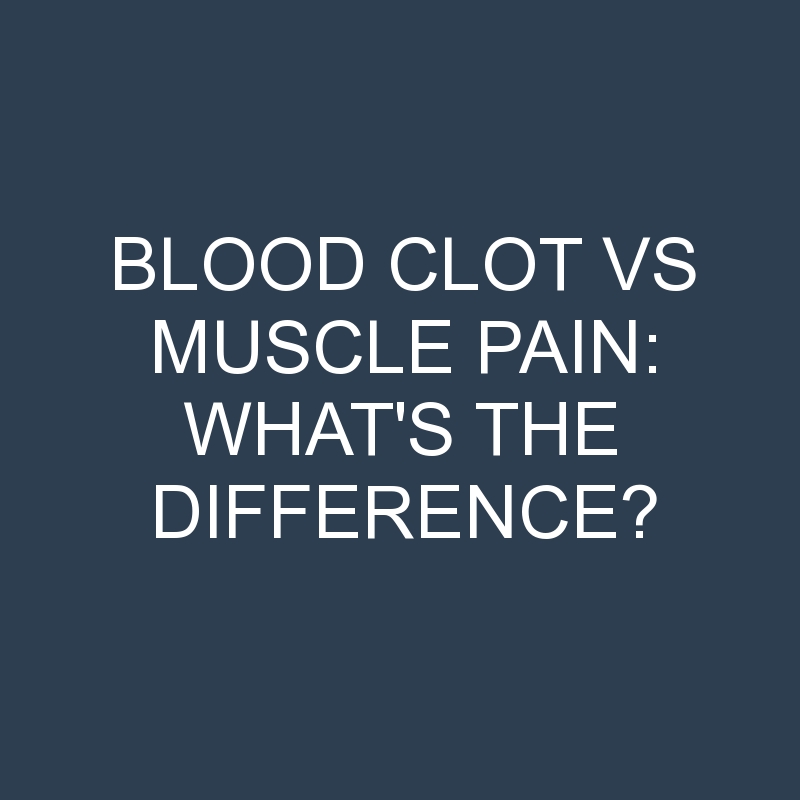Post Contents
Blood Clot Vs Muscle Pain: What’s the Difference?
There’s nothing quite like the feeling of a good workout. Your muscles feel alive, your endorphins are flowing, and you just feel great overall. But sometimes, that post-workout feeling can be accompanied by some less than desirable symptoms – namely, pain and stiffness. So what’s the difference between muscle pain and a blood clot? Keep reading to find out!
What is a blood clot?
When you have a cut or scrape, your body forms a blood clot to help stop the bleeding. But sometimes, clots form inside your veins without an injury. These clots can be very dangerous.
Your blood is always flowing, but it moves more slowly when it’s in your veins. This makes it easier for clots to form. When a clot forms, it can block the flow of blood to your heart, lungs, or other organs.
There are two types of clots that can form in your veins:
-A thrombus is a clot that forms inside a vein and stays there.
-An embolus is a clot that breaks off from another place in your body and travels through your bloodstream. If it gets stuck in a blood vessel, it can block the flow of blood.
Blood clots are more common in people who are overweight, have high blood pressure, or have diabetes. You’re also at higher risk if you smoke, take birth control pills, or are pregnant.
If you think you might have a blood clot, call your doctor right away.
What is muscle pain?
Most people have experienced muscle pain at some point in their lives. Muscle pain can be caused by a variety of things, including overuse, injury, or even stress. Muscle pain can also be a symptom of a more serious condition, such as fibromyalgia.
There are two types of muscle pain: acute and chronic. Acute muscle pain is the kind of pain that comes on suddenly and typically goes away within a few days or weeks. Chronic muscle pain, on the other hand, lasts for months or even years. It can be debilitating and make it difficult to perform everyday tasks.
If you’re experiencing muscle pain, it’s important to see your doctor to rule out any underlying causes. Once the cause of your muscle pain has been determined, your doctor can develop a treatment plan to help relieve your symptoms.
How can you tell the difference between the two?
If you’re not sure whether the pain you’re experiencing is from a blood clot or muscle pain, there are some things you can look for to help you figure out which it is. One key difference is that blood clots usually cause swelling, while muscle pain does not. Blood clots can also be accompanied by other symptoms like shortness of breath, while muscle pain is usually just isolated to the area where the pain is felt. If you’re still unsure, your best bet is to visit a doctor to get a diagnosis.
When should you see a doctor?
If you are experiencing pain in your muscles, it is important to see a doctor to rule out the possibility of a blood clot. While muscle pain is usually not serious, a blood clot can be very dangerous. If you are unsure whether your pain is coming from a muscle or a blood clot, it is best to err on the side of caution and see a doctor.
Conclusion
There you have it! The next time you experience pain in your muscles or a blood clot, you’ll know the difference. Muscle pain is usually nothing to worry about and will go away on its own, but a blood clot can be serious and should be treated by a doctor. If you’re ever unsure, it’s always better to err on the side of caution and see a medical professional.
